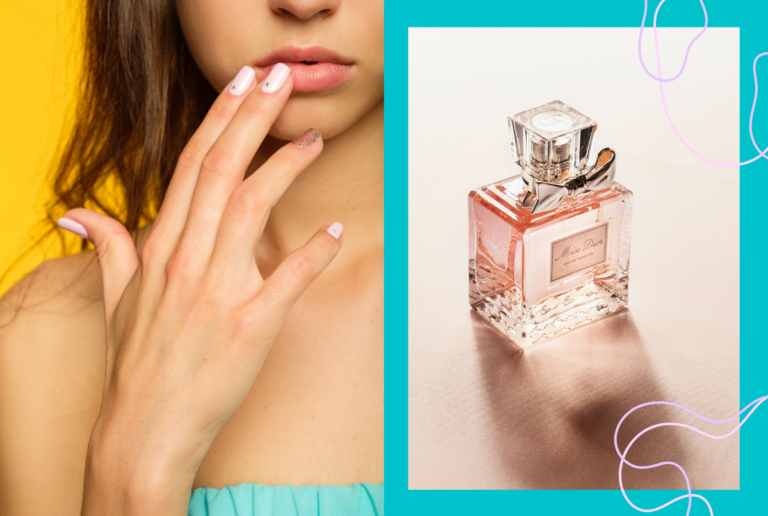How to Protect Henna in the Shower?
Eager to preserve the beauty of your henna design through every shower?
Henna, a natural and ancient art form, can be a delightful way to adorn your skin, but keeping it vibrant through daily routines like showering can be a challenge. The secret lies in understanding henna care and adopting a few protective measures to ensure your design stays as fresh and vivid as when it was first applied.
Well, we’ll be going over:
- What makes henna so unique and how does its care differ from other skin adornments?
- Can simple adjustments to your shower routine significantly extend the life of your henna design?
- What are the dos and don’ts for henna aftercare to maintain its stunning appearance?
Let’s dive in.

Understanding Henna and Its Care
Before discussing how to protect henna in the shower, it’s essential to understand what henna is and how to care for it. Henna is a natural dye made from the leaves of the henna plant, which is used to create intricate designs on the skin.
Henna stains the top layer of the skin, and the color can last anywhere from one to four weeks, depending on various factors such as skin type, location, and aftercare.
Protecting Henna During a Shower
When it comes to protecting your henna during a shower, the key is to avoid getting it wet for the first 24 hours after application. However, if you must take a shower within that time frame, there are a few things you can do to protect your henna.
One way is to cover the henna design with a waterproof bandage or plastic wrap. Another way is to rinse the henna design with cool water and avoid using soap or shampoo on the area.
Key Takeaways
- Henna is a natural dye made from the leaves of the henna plant, which is used to create intricate designs on the skin.
- To protect your henna during a shower, avoid getting it wet for the first 24 hours after application. If you must take a shower within that time frame, cover the henna design with a waterproof bandage or plastic wrap, or rinse the henna design with cool water and avoid using soap or shampoo on the area.
- Aftercare is crucial to enhance henna longevity. Avoid activities that cause excessive sweating, use a natural moisturizer, and avoid using products containing alcohol or bleach.
Understanding Henna and Its Care
The Science of Henna Stain
Henna, also known as mehndi, is a natural dye made from the dried leaves of the Lawsonia inermis plant. The dye molecule, lawsone, is found in the leaves and is released when the leaves are crushed and mixed with a liquid to form a paste. The paste is applied to the skin, where it stains the top layers of the skin cells.
The quality of the henna paste and the design applied to the skin are the two main factors that determine the resulting stain. High-quality henna paste will have a higher concentration of lawsone, resulting in a deeper and longer-lasting stain.
A well-designed henna pattern with intricate details will also result in a more striking and beautiful stain.
Pre-Shower Preparations
If you want to protect your henna design in the shower, it is important to take some precautions before getting into the water. Here are some tips to help you protect your henna:
- Wait for the henna paste to dry completely before getting into the shower. This can take anywhere from 30 minutes to several hours, depending on the thickness of the paste and the humidity in the air. You can speed up the drying process by using a hairdryer on a low setting.
- Apply a thin layer of natural oil, such as coconut or olive oil, over the henna design before getting into the shower. This will help to protect the henna from water and prevent it from fading or smudging.
- Avoid using soap or shampoo on the henna design in the shower. These products can strip away the natural oils and cause the henna to fade or smudge. Instead, use a gentle, fragrance-free body wash and avoid scrubbing the henna design.
By following these simple tips, you can protect your henna design in the shower and ensure that it lasts as long as possible. Remember to choose high-quality henna paste and a well-designed henna pattern to achieve the best results.
Protecting Henna During a Shower
If you want to keep your henna design looking fresh and vibrant, it’s important to take steps to protect it while you shower. Here are some tips to help you keep your henna looking great.
Waterproofing Techniques
One of the best ways to protect your henna in the shower is to waterproof it. You can do this by covering the design with plastic wrap or a waterproof bandage before you shower. Make sure that the wrap or bandage is securely in place and that no water can seep through.
This will help to keep your henna design dry and prevent it from fading or smudging.
Another technique you can use to protect your henna design is to apply a waterproofing spray. These sprays create a barrier that helps to repel water and keep your henna design looking great. Just be sure to read the instructions carefully and follow them closely to ensure that you get the best results.
Products to Avoid
When you’re showering with henna, it’s important to avoid using harsh soaps or chemicals that can damage the design. Instead, use a gentle, moisturizing soap that won’t strip your skin of its natural oils. You should also avoid using any exfoliating products, as these can cause the henna to fade more quickly.
In addition to avoiding harsh products, you should also be careful not to rub or scrub the henna design while you’re showering. This can cause the design to smudge or fade, so it’s best to be gentle and avoid touching the design as much as possible.
By taking these simple steps to protect your henna design while you shower, you can help to ensure that it stays looking great for as long as possible. So go ahead and enjoy your shower, knowing that your henna design is safe and protected.
Aftercare for Enhanced Henna Longevity
Henna is a beautiful and natural way to adorn your skin with intricate designs. However, once you’ve applied your henna, you need to take care of it properly to ensure it lasts as long as possible. Here are some tips to help you protect your henna in the shower.
Moisturizing and Oiling
Moisturizing and oiling your skin is crucial to keeping your henna looking fresh and vibrant. After you’ve applied your henna, wait until it’s completely dry before applying any moisturizer or oil. This will prevent the henna from smudging or rubbing off.
Coconut oil is an excellent natural oil to use on your henna. It’s packed with nutrients and helps to keep your skin hydrated. Simply apply a small amount of coconut oil to your henna design and gently rub it in. Be careful not to apply too much oil, as this can cause the henna to smudge.
Post-Shower Practices
When you take a shower, it’s important to take extra care to protect your henna. Avoid using hot water on your henna, as this can cause it to fade faster. Instead, use lukewarm water and a gentle soap to clean your skin.
After you’ve finished showering, gently pat your skin dry with a towel. Avoid rubbing your skin too hard, as this can cause the henna to smudge or fade. Once your skin is dry, apply a light layer of lotion or henna balm to help lock in the color and keep your skin moisturized.
By following these simple tips, you can help to protect your henna and ensure it lasts as long as possible. With proper aftercare, you can enjoy your beautiful henna designs for days to come.
Common Pitfalls and How to Avoid Them
When it comes to protecting your henna in the shower, there are a few common pitfalls that you should be aware of and know how to avoid. These include exposure to harmful elements and physical damage to the henna.
Exposure to Harmful Elements
One of the biggest risks to your henna in the shower is exposure to harmful elements such as chlorine and direct sunlight. Chlorine can cause the henna to fade or smudge, while direct sunlight can cause the henna to dry out and crack.
To avoid these issues, it’s recommended that you rinse off any chlorine or other chemicals from your skin before getting in the shower and avoid direct sunlight while the henna is still on your skin. You can also cover the henna with a cloth or towel while showering to protect it from any harmful elements.
Physical Damage to Henna
Another common pitfall is physical damage to the henna, which can occur due to exfoliation or rubbing against clothing or other objects. Exfoliation can cause the henna to fade or peel, while rubbing against clothing or other objects can cause the henna to smudge or wear away.
To avoid physical damage to the henna, it’s recommended that you avoid exfoliating the area where the henna is applied and wear loose-fitting clothing that won’t rub against the henna. You can also apply a protective layer of oil or lotion over the henna to help prevent any rubbing or smudging.
By following these tips, you can help protect your henna in the shower and ensure that it lasts as long as possible. Remember to be gentle with the henna and avoid any harsh chemicals or physical damage that can cause it to fade or wear away.
Maintaining Henna Design Vibrancy
Henna is a natural dye that can produce vibrant and long-lasting designs on your skin. However, henna designs can fade quickly if not properly cared for, especially when exposed to water.
If you want to maintain the vibrancy of your henna design, it is important to take extra care when showering. Here are some natural methods for darkening and long-term care strategies.
Natural Methods for Darkening
If you want to darken your henna design, you can try applying a mixture of lemon juice and sugar to the design before taking a shower. The citric acid in the lemon juice can help to darken the henna color, while the sugar can help to seal in the color.
To use this method, mix equal parts of lemon juice and sugar to form a thick paste. Apply the paste to your henna design before taking a shower, and leave it on for 10-15 minutes. Rinse off the paste with cool water, and pat dry.
Another natural method for darkening your henna design is to add a few drops of eucalyptus oil to your shower water. Eucalyptus oil has natural properties that can help to enhance the color of your henna design.
Simply add a few drops of eucalyptus oil to your shower water, and allow the steam to penetrate your skin. This method can also help to relax your muscles and clear your sinuses.
Long-term Care Strategies
To protect your henna design in the shower, it is important to avoid using hot water and harsh soaps. Hot water can cause the henna dye to fade quickly, while harsh soaps can strip away the natural oils in your skin that help to keep the henna color vibrant.
Instead, use lukewarm water and a mild, natural soap to clean your skin.
After showering, pat your skin dry with a soft towel. Avoid rubbing your skin, as this can cause the henna design to fade. You can also apply a small amount of coconut oil or olive oil to your skin to help seal in the henna color and keep your skin moisturized.
By following these natural methods for darkening and long-term care strategies, you can maintain the vibrancy of your henna design for weeks to come.
Frequently Asked Questions
What steps should be taken to shield henna designs from water during a shower?
To protect your henna design from water during a shower, it is recommended to cover the design with a waterproof bandage or plastic wrap. Be sure to wrap the bandage or plastic wrap tightly around the design to prevent water from seeping in.
Alternatively, you can try to avoid getting the design wet by taking a bath instead of a shower, or by washing around the design with a washcloth.
Can applying oil to a henna tattoo extend its longevity against water exposure?
Applying oil to a henna tattoo may help to extend its longevity against water exposure. After the henna has dried, apply a thin layer of oil, such as coconut oil or olive oil, to the design. The oil will help to protect the henna from water and prevent it from fading.
However, be sure to use only a small amount of oil to avoid smudging or smearing the design.
What precautions can be taken to prevent henna from fading when swimming?
To prevent henna from fading when swimming, it is recommended to avoid swimming for at least 24 hours after applying henna. Chlorine and saltwater can cause henna to fade faster, so try to avoid swimming altogether if possible.
If you must swim, be sure to cover the henna design with a waterproof bandage or plastic wrap, and avoid rubbing or scratching the design.
How can one ensure henna remains intact and vibrant after it has dried?
To ensure that henna remains intact and vibrant after it has dried, it is recommended to keep the design dry and avoid touching it as much as possible.
Avoid using lotions or oils on the design, as this can cause it to smudge or fade. Also, avoid wearing tight clothing or jewelry that may rub against the design and cause it to smudge or fade.
What are the best practices for henna care while sleeping to avoid smudging?
To avoid smudging your henna design while sleeping, it is recommended to sleep on your back or on your side with the henna design facing up.
Avoid sleeping on your stomach or on the side with the henna design facing down, as this can cause the design to smudge or fade. Also, avoid wearing tight clothing or jewelry that may rub against the design while you sleep.
Is there an optimal duration to leave henna on the skin to maximize stain depth before bathing?
The optimal duration to leave henna on the skin to maximize stain depth before bathing varies depending on the individual and the type of henna used. In general, it is recommended to leave the henna on for at least 4-6 hours to allow the stain to develop fully.
However, some people may need to leave the henna on for longer to achieve a deeper stain. Be sure to follow the instructions provided with your henna product for best results.






